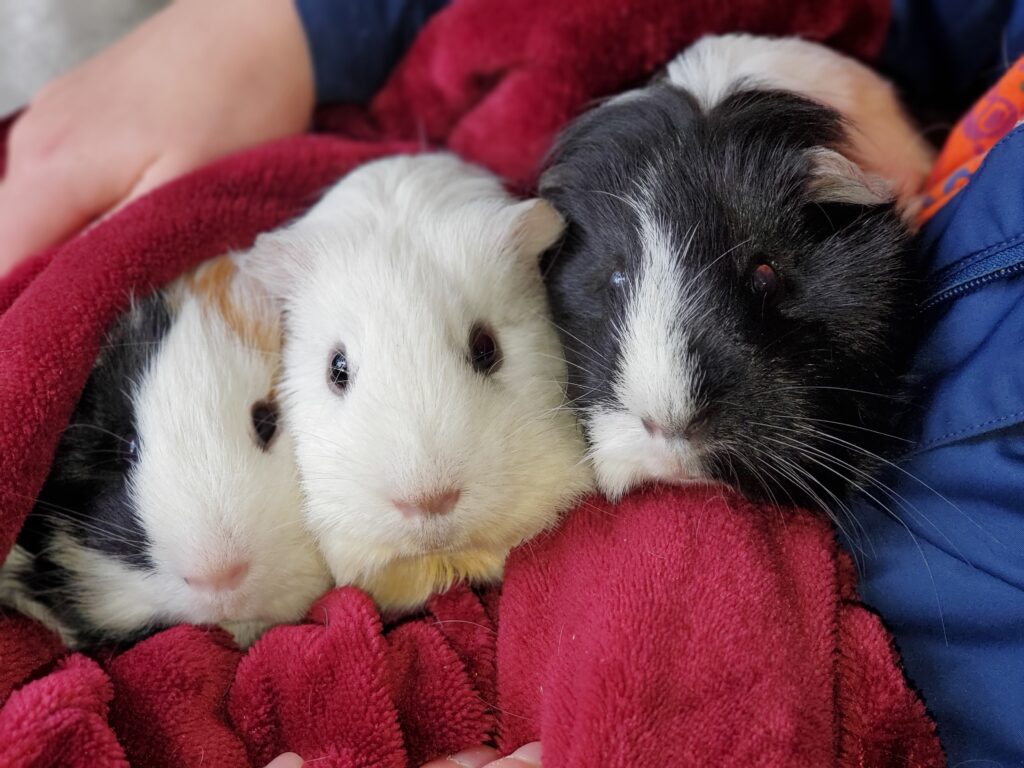There were so many excellent ideas and tips that Joanna discussed during her presentation.
Some of my favourites were:
Mood Scale: On a scale of guinea pig, how are you feeling today? Tara Wood has lots of photos to use. Or some are below to start! 🙂


Make a class created bulletin board, it gives ownership to students for class and the students curate and update it.
Creative ways to take Attendance: use mood scale or a “would you rather” question – students write their name under their choice, then you can talk about the question during class.
Building Connection:
“Olympics” on the last day of school, Feel Good Friday, Tea Time, etc.
Memes are always a hit. Include drawing space at the side of quizzes for doodling.
Routines give predictability to students.
– Would you rather questions (use whiteboard and student names on magnets or have students write names)
You can create a class playlist to listen to while students get settled.
2. Check in with students: use mood scales, finger scales, thumbs (discreet), also write notes with post its
3. Ask students what works best for them!
4. Go slow, do only what works for you.
When getting to know students, be authentic: can bring pictures of yourself and your family, places you have been…
Visual Learners –
Have visuals as a prompt for learners, create a whole class visual schedule – spend time every day going through the daily schedule, so they can ask questions about their day.
Visual Prompt: In the morning, on screen have saved the following template:
Reminders! First……, then….. Announcements:
Assessment
Assessment as Learning: involving students in their learning process as n opportunity to practice their skills. Involves self-assessment, feedback, and reflection.
Proficiency Scale:
Talk to students about the language of the scale. When you give an assignment, you model what the proficiency scale looks like. Give them samples, practice writing feedback, highlighting the aspects, then the students assess the samples. Then look at them all as a class. Make sure you have anchor charts so it’s always visible on the wall.
Co-Creating a rubric –
1. Set the learning intention: what skill do you want the class to learn, practice, and understand?
2. Brainstorm criteria as a whole class, ten small groups, lots of voting, expressing opinions etc.
3. Show a sample of work (a bad one.) What do you notice? Write those things down as criteria.
Have the proficiency scale with the proficient category described. Then students can highlight what they have achieved/met and put arrows into the developing or extending categories, if needed.
Use videos with students to show what they know – i.e. students create a how to video to cover instruction writing. Flipgrid – is an excellent for students videos (just a join code needed for students).
Digital assessment:
Students curate their digital folder. They have to support their choice for work in the folder and how it meets the leaning standard. This is self-assessment.
ALWAYS use mentor texts: to help kids learn how to write properly and have a guideline. Make the assignment topics fun so you get buy-in.

Now what?
Now it’s time to try out these tips and ideas in my practicum! Will I remember them all? Unlikely! But will I try to use as many as I can? Yes!
JOANNA’S SUGGESTED RESOURCES:
Liz Kleinrock: @teachntransform https://twitter.com/teachntransform?lang=en
Marie Batiste: Decolonizing Education, nourishing the Learning Spirit (Available here)
Bob Joseph: 21 Things You May Not Know About the Indian Act.
Lisa Baylis: Self-compassion for educators (Available here)
Fawn Nguyen: visual Math resources – Excellent resources and ideas. This is a link to a great article for new teachers: https://www.fawnnguyen.com/teach/dear-new-teachers
